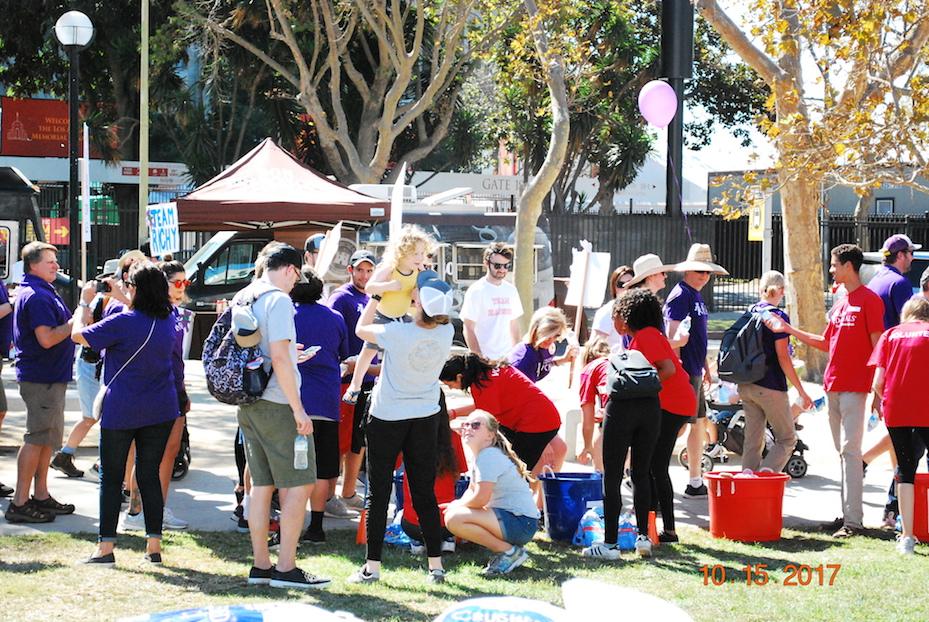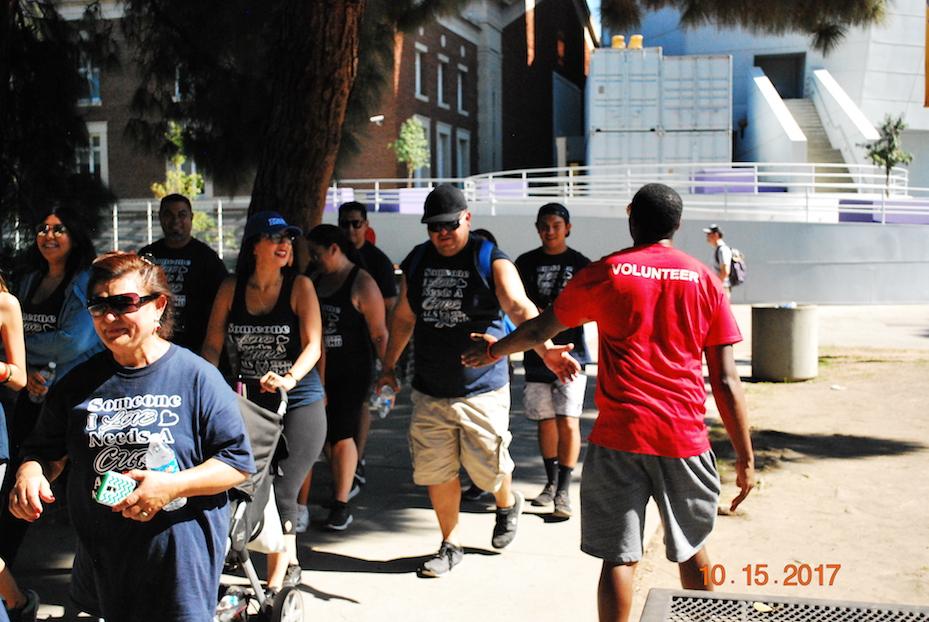It was 7 a.m. on a Sunday morning, when people began to arrive at Los Angeles Exposition Park for the yearly ALS Los Angeles County Walk organized by the ALS Association. Tents were set up, along with booths by a group of volunteers that come together every year in order to raise money to find a cure.
The ALS Association raises money to help fight ALS or Lou Gehrig’s Disease, which is a progressive neurodegenerative disease that attacks nerve cells in the brain and spinal cord. The Los Angeles County Walk was able to raise over $400,000 for research, care services, and public policy in order to try to find a cure, according to the official website.
“If taking a couple of hours out of my day is going to help us find a cure then I’m all for it,” said CSUN student and ALS LA County Walk volunteer, Brian Walker.
Walker was one of many volunteers that helped throughout the event by providing participants in the event with water, food and encouragement along the route. Walker has participated in this event for the past two years in order to help find a cure for the disease that affects 20,000 people every year with a life expectancy of two to five years after diagnosis.

“The walk was great because it allowed me to meet a lot of nice people while also, helping to raise money for a good cause,” said Eric McCoy, another CSUN student who volunteered for the event.
McCoy has also volunteered for the past two years, encouraging participants along the route as some of the participants are patients that have been diagnosed with ALS. The volunteers that come together to host this event come from all over Los Angeles as well as some CSUN students.
“It feels great to get involved with something bigger than myself,” said CSUN student and volunteer Jorge Arroyo.
This was a popular sentiment held by the volunteers as some worked booths and others stood in the sun to motivate those on the trail.
However, it is still not known what exactly causes ALS besides an interaction from the environment with genes. There are some possible factors that may contribute to causing the disease, according to the ALS Association website. One of the factors may be warfare according to the ALS Association, as military veterans are twice as likely to have ALS. This disease affects thousands of people and some CSUN students are trying to make a difference.






